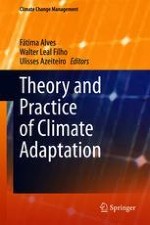2018 | OriginalPaper | Chapter
Coffee Responses to Drought, Warming and High [CO2] in a Context of Future Climate Change Scenarios
Authors : José Nobre Semedo, Weverton P. Rodrigues, Danielly Dubberstein, Madlles Q. Martins, Lima D. Martins, Isabel P. Pais, Ana P. Rodrigues, António E. Leitão, Fábio L. Partelli, Eliemar Campostrini, Marcelo A. Tomaz, Fernando H. Reboredo, Paula Scotti-Campos, Ana I. Ribeiro-Barros, Fernando C. Lidon, Fábio M. DaMatta, José C. Ramalho
Published in: Theory and Practice of Climate Adaptation
Publisher: Springer International Publishing
Activate our intelligent search to find suitable subject content or patents.
Select sections of text to find matching patents with Artificial Intelligence. powered by
Select sections of text to find additional relevant content using AI-assisted search. powered by
